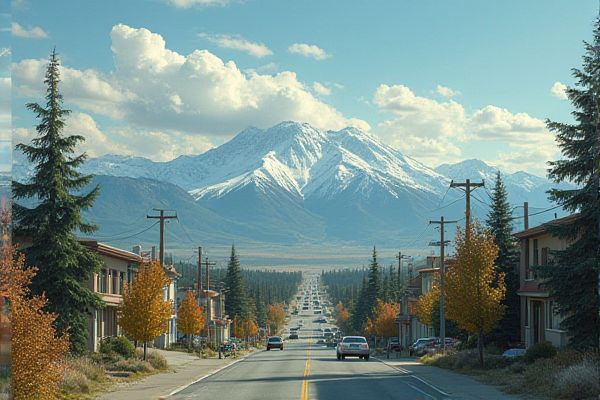
Education system and best schools in Montana: Public vs. private school options. Top-ranked high schools. Advanced Placement (AP) course availability. School district ratings. Teacher-student ratios. Special education programs. Extracurricular activities offered. School safety measures. Enrollment procedures and deadlines. Homeschooling regulations.
Public vs. private school options.
In Montana, families have various education options, including traditional public schools, which are free and attended by a significant majority of K-12 students, and public charter schools that offer innovative curricula at no cost. Private schools present alternatives with unique curricula and smaller class sizes, with average tuitions of $8,351 for elementary and $9,185 for high schools. Additionally, options such as online learning programs, homeschooling, and special education services provide flexibility and choice for families. To explore these options in detail, visit the comprehensive guide on Montana School Choice.
Top-ranked high schools.
In Montana, the top-ranked high schools feature Bozeman High School, which secured the No. 1 spot in the state and ranked 213 nationally. This is followed by Whitefish High School and Glacier High School, ranking second and third in the state, and 1,567 and 1,920 nationally, respectively, according to the U.S. News & World Report 2024 Best High Schools list. These rankings consider important factors such as college readiness, state assessment proficiency, and graduation rates, highlighting the commitment of these institutions to academic excellence.
Advanced Placement (AP) course availability.
In Montana, Advanced Placement (AP) courses are widely available, offering college-level curriculum to high school students through local schools or the Montana Digital Academy. These programs help students develop college-level skills, prepare for postsecondary success, and potentially earn college credit or advanced placement, with support from initiatives like the Montana AP Summer Institute and fee reductions for low-income students. For more detailed information, visit the Montana Digital Academy website, where resources and guidance for AP courses are thoroughly outlined.
School district ratings.
Montana's top school districts, such as Bozeman High School District, Billings High School District, Beaverhead County High School District, Missoula High School District, and Park High School District, are recognized for their exceptional educational standards. Among them, Bozeman High School District stands out as the best, attributed to its above-average graduation rate and the high college and career readiness of its students. These districts exemplify academic achievement, a focus on STEM education, and maintain favorable student-teacher ratios, contributing to their success in educating young minds.
Teacher-student ratios.
In Montana, the education system focuses on delivering quality education by ensuring schools comply with state standards, which encompass adequate educational resources and staffing. While the specific teacher-student ratio is not explicitly detailed in the education laws, it is generally observed that the ratio is around 17:1. This ratio is considered relatively favorable for student learning, as a majority of teachers have more than three years of experience. For those interested in exploring more about Montana's education standards and policies, FindLaw provides detailed insights on Montana Education Laws, underscoring the state's commitment to maintaining high educational quality.
Special education programs.
The OPI Special Education Endorsement Project in Montana, initiated in 1987, aims to address the shortage of Special Education teachers in rural areas by providing a structured program for teachers to obtain Special Education endorsements. With participation from several institutions of higher education and stringent requirements for completion and service commitment, this project plays a crucial role in enhancing educational opportunities for students in need. For more details, visit the OPI Special Education Endorsement Project website, which outlines the comprehensive approach and collaborative efforts involved in this initiative.
Extracurricular activities offered.
In Montana, home and nonpublic school students can participate in public school extracurricular activities, including sports and other programs, under the new law SB157, which took effect on July 1, 2021. These students must meet the same standards as full-time public school students and reside within the school's attendance area, but they are not required to be enrolled or attend the public school. For more details, please visit the Montana High School Sports website to learn about how these opportunities are managed across the state.
School safety measures.
Montana's education system implements robust school safety measures, including the requirement for at least eight disaster drills per year, the use of Standard Response Protocols and Situational Awareness Emergency Checklists, and the formation of multidisciplinary teams for threat assessment and school-wide safety protocols. These measures are coordinated by the Office of Public Instruction in partnership with various state and federal agencies to ensure a safe and connected school environment.
Enrollment procedures and deadlines.
Enrollment procedures in Montana involve key deadlines such as College Application Week from September 30 to October 11, where high school seniors can apply to colleges in the Montana University System for free. Additionally, important dates include FAFSA completion events in October and specific deadlines for nonresident enrollment, which must be submitted by January 31 for the following school year. For more details, you can explore the key dates on the Montana University System website, offering comprehensive information on application timelines and requirements.
Homeschooling regulations.
In Montana, homeschooling regulations require parents to notify the county superintendent, maintain attendance and immunization records, and provide an organized course of study including subjects like English, math, and science. Parents must also teach for a specified number of hours per year, with 720 hours required for grades 1-3 and 1,080 hours for grades 4-12. Interestingly, there is no requirement for parental qualifications or standardized testing for students. For more detailed information, you can explore the Montana Homeschooling Laws and Requirements on their website.
